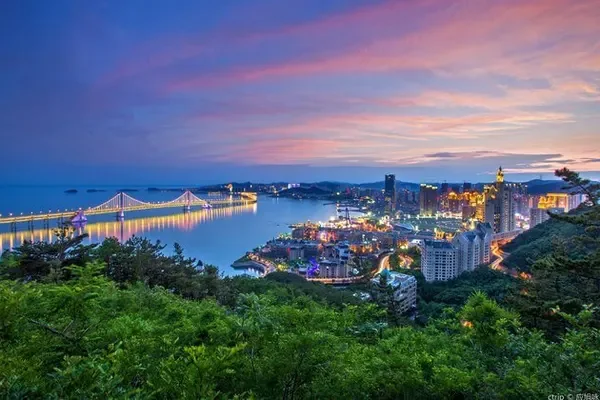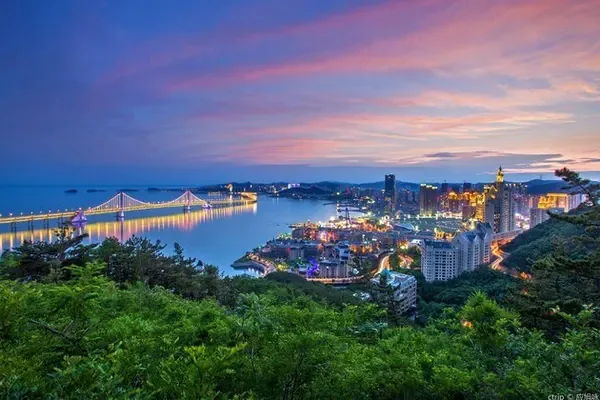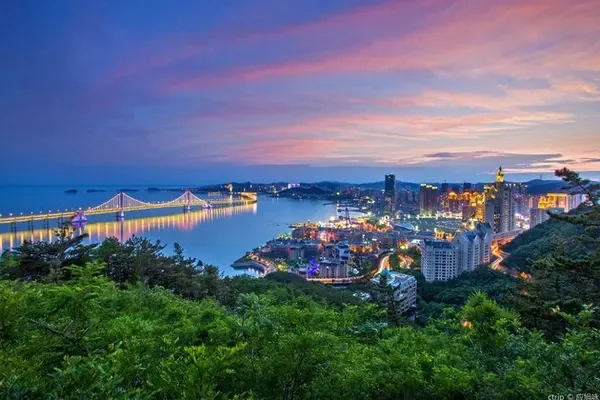As a reporter who grew up in Beijing, he spent his childhood in the Caochang Toutiao Guangdong Clubhouse in Xianyukou outside Qianmen. Recently, the reporter took the time to visit this alley where I grew up, but now it has changed beyond recognition. The narrow alleys are dilapidated, and there are very few decent old houses left. Especially the Guangdong Guild Hall where I lived was horrible... At the same time, the intermittent memories of that year also appeared in my mind one after another.

Beijing's moat (file photo)
What I remember deeply is that there was only one bicycle in the family, which was the means of transportation for my father to go to and from get off work. Others traveled on two legs. At that time, I felt that it was a long way from home to the station. Caochang Toutiao is located from the entrance of Xianyukou in the west to the exit of Muchang Hutong in the east, about one-third of the west of this east-west road for several kilometers.

Beijing's city wall (file photo)
At that time, there were two roads leading to the station, one north and one west. The closer one was from the north exit of Caochang Toutiao and entered the Shengou Hutong diagonally opposite to the north. It first crossed the bridge over the moat, and then crossed the railway. At the foot of the city wall, there was a gate leading out of the city at that time, but the small gate that opened from time to time seemed to be managed by the railway department. If you catch up with the door and open it, you will be on Zhengyi Road after you go out. The road along the city wall here is where the first three gates are today. There is just a No. 6 trolleybus passing through here and there is a station on Zhengyi Road. However, if you are unlucky and the small gate under the city wall is not opened, you can only turn back and head west to Qianmenwai Street.

At that time, the railway between the moat and the city wall had not been demolished, but it was no longer in operation. And its end point is Zhengyangmen Railway Station on the east side of Qianmen Gate Tower. I remember filming the film "After the Armistice" starring Zhang Ping here at that time, and I also made an appointment with my classmates to go to the location of the train station at that time to watch the filming. What I remember deeply is that the camera advances on the platform to shoot, and I only see the dynamic effect of the train moving when watching the movie, which is reflected on the screen in this way.

Stills of "After the Armistice" (data picture)
And the other road from the North Exit of Caochang Toutiao to the west to the Dashilan Station of the No. 5 bus that I often take, felt very far away at that time. Remember to go through Qingyun Hutong, Changxiang Sitiao to Toutiao and many other alleys, then pass through the Public Theater, Lianyou Photo Studio, Tsinghua Garden Bathing Pool, Tianxingju Fried Liver Restaurant, Bianyifang Roast Duck Restaurant, Black Monkey Store, etc., and finally from Fresh When Yukou came out, he was facing the big fence, that is, he was on the main street outside Qianmen.

Street view of Xianyukou (file photo)
Looking at some pictures of old Beijing now, these deep memories come back. But for some unknown reason, now that I am revisiting the old places, I feel that these roads are suddenly much shorter, far from the hard work of walking step by step on two legs in childhood. There is a strong contrast between the scene after reconstruction and the memory of that year.

Going east through the three long alleys, you come to Beijing Xinglong Street No. 1 Primary School, which is very close to the north entrance of Caochang Toutiao. The six-year primary school career here is unforgettable...Standing at the school gate and looking at the gray building inside It seems to be much smaller...

Finally came to Caochang Toutiao, entered the narrow alley, the scene in front of me was far from the impression I had back then. I heard from my mother that shortly after I was born, I moved to the Guangdong Guild Hall at No. 20 Caochang Toutiao (the house number was later re-planned and changed to No. 7). It was spent here until the early 1970s of the last century. Some childhood memories are deep in my memory, while others have faded away. But the days when the Cantonese guild halls were more decent I have experienced are still fresh in my memory.

At that time, Caochang Toutiao had three guild halls. Counting from the north entrance, the first was the Guangdong guild hall at No. 20 on the west side of the road, and the second was the Xinghui Hall at No. 5 diagonally opposite the horse hall of the Guangdong guild hall. It is the Macheng Guild Hall in Courtyard No. 10 in the north of Toutiao Nankou Road. Although they are both guild halls, the former is several times larger than the latter two.

I remember that at that time, the Guangdong Guild Hall had a set of courtyards, with a total of more than ten courtyards, and a total of more than 30 families lived in them. At that time, Cantonese accounted for more than 90% of the hospital, while non-Guangdong foreigners accounted for less than 10%. Several more families work on the rail system. I can still name a few of the Cantonese friends who played with me when I was young, such as Hengzai, Amenzai, Aman, Alai, etc.

The courtyards in the Guangdong Guild Hall are very particular, and they are basically independent courtyards. I remember that there are about six yards with wing rooms in front of the corridor and back out of the building, and the rest are generally irregular yards. Perhaps because the Guangdong Guild Hall is oriented from east to west, the main rooms in the courtyard of the guild hall are basically facing west to east, and most of the side rooms are also north-south.

Recently, Jia Xulu, a childhood friend who played with me, said that the Guangdong Guild Hall used to be the official residence of a fourth-rank official. The original two round stones on the horse at the gate are evidence. It is said that the shape of the Shangma stone in the official's house in the Qing Dynasty was determined according to the grade of the official. Shangma Stone has round and square shapes, and if it is not according to the official grade, it will be punished if it is wrong.

The Guangdong Guild Hall has two gates, one is the main entrance and the other is the horse hall. I remember that there was a large plaque in the middle of the main entrance with "Guangdong Guild Hall", and two small plaques with "No. 2" and "Tanhua" inside the door. The main entrance is only three rooms away from the horse house in the same direction.

Originally, both doors were accessible, but later a pool of filthy water was pressed in the middle of the doorway of the horse house. In summer, the smell is suffocating, and in winter, the sewage flowing by the pool freezes into ice, which is easy to slip and fall, so Few people go through this door. Although it is called a horse number, I have never seen a horse tied to this gate in the time I have experienced. Until later, due to housing shortage, the horse number was changed to residential housing.

Now that I think about it, there were two families in the yard that might have had some "status". One is the courtyard named Luo on the southernmost side of the guild hall; the other is the courtyard named Mai on the northernmost side. I heard from my mother that the masters of the courtyard with the surname Luo, the elder Luo Fukan (transliteration) and the younger one Luo Yinggong (transliteration), were both well-known calligraphers in Beijing at that time.

Luo Fukan has a close relationship with the famous Peking Opera master Cheng Yanqiu and others. When Mr. Luo passed away in 1955, Peking Opera masters Mei Lanfang and Cheng Yanqiu, as well as Mr. Li Jishen, former vice chairman of the Central People's Government of the People's Republic of China, all went to the Guangdong Guild Hall to express their condolences. To this day, I still vaguely remember that in the courtyard of Luo’s family, several monks gathered around a long table and performed rituals for several days, which was very grand.

The Mai family in the courtyard to the north has three brothers, Mai Si, Mai Wu, and Mai Liu. Mai Si once studied in Japan, and later married a Japanese wife and returned to China. The couple were very affectionate when they were in the Guangdong Guild Hall. They had several children. Later, his Japanese wife unfortunately died of illness. After that, Mai Si also left the Guangdong Guild Hall in Beijing with his family and returned to his hometown in Guangdong.

There is also a large Cantonese family surnamed Huang living in the main house in the yard closest to the gate. My partner who is a few years older than me is called Huang Yu. His mother was working in a film distribution company in Xijiaominxiang. At that time, his mother took them there to watch movies every week, which really made me envious. Later, the whole family moved to Shuiduzi in the eastern suburbs, and their contacts were much less.

Many things from my childhood are still very interesting to think about. I remember that every weekend at that time, as long as the moving melody of Cantonese music "Backgammon" and "Colorful Clouds Chasing the Moon" came from the Sitiao Primary School in Changxiang, which was only separated by an alley, it indicated that there would be another open-air movie. So that night, under the guidance of adults, the children took small benches and went to watch movies on the playground of the primary school with their family. I remember that each ticket was only two cents at that time. Such as "Soul of the Sea", "Song Jingshi", "Dong Cunrui", "Underground Pioneer", "Plain Guerrilla", "Red Children", etc. are all films that Changxiang Sitiao Primary School has shown.

The backyard of the Guangdong Guild Hall is a public toilet. I remember that when fireworks were set off on May 1st and National Day, I would sneak up on the roof of the toilet with the children to watch the fireworks. With the sound of the thunderbolt from the blue sky, you will see the colorful fireworks blooming in the sky when you look up. Sometimes when the north wind blows, bunches of white parachutes burst out of many fireworks, flickeringly falling on the surrounding roofs in the night sky. Since the toilet is next to the alley in Qingyun Lane, it is inevitable that the friends will climb onto the roof of other people's houses by mistake. Therefore, once they are discovered, they will be reprimanded by the courtyard in Qingyun Lane.

During the nearly 20 years of living in the Guangdong Guild Hall, I have witnessed its changes, from relatively regular courtyards to a messy courtyard, each courtyard is full of small kitchens, and the residents in it have also changed. One wave after another. And there are fewer and fewer people from Guangdong. Some childhood friends of family members who worked on the railway also left Beijing for Tianjin, Lanzhou, Baoding and other places with their parents' job transfer.

When I moved out of here in 1970, the Guangdong Guild Hall was beyond recognition. It’s also a coincidence. In the early 1970s, I moved from Caochang Toutiao, which belonged to Chongwen District at the time, to Xianyu Lane, diagonally opposite Beijing Station, Dongcheng District. The difference between Xianyu Lane and Xianyukou is only one word, especially after a few years. , Chongwen District was merged into Dongcheng District, and I have spent more than 20 years of good time here.

After moving, I heard that in 1989, Caochang Toutiao Guangdong Guild Hall underwent a major renovation, the original Guangdong Guild Hall was completely demolished, and several buildings that were slightly stronger than simple buildings were rebuilt. I've been there once and the old neighborhood is running out. I heard from the old neighbors that there are fewer opportunities for everyone to communicate with each other when they live in a building. I heard that Caochang Toutiao may undergo a large-scale overall renovation along with the Qianmenwai area, and the history of some old Beijing courtyards such as the Guangdong Guild Hall will also become people's eternal memory... (Photo: Feng Ganyong)


